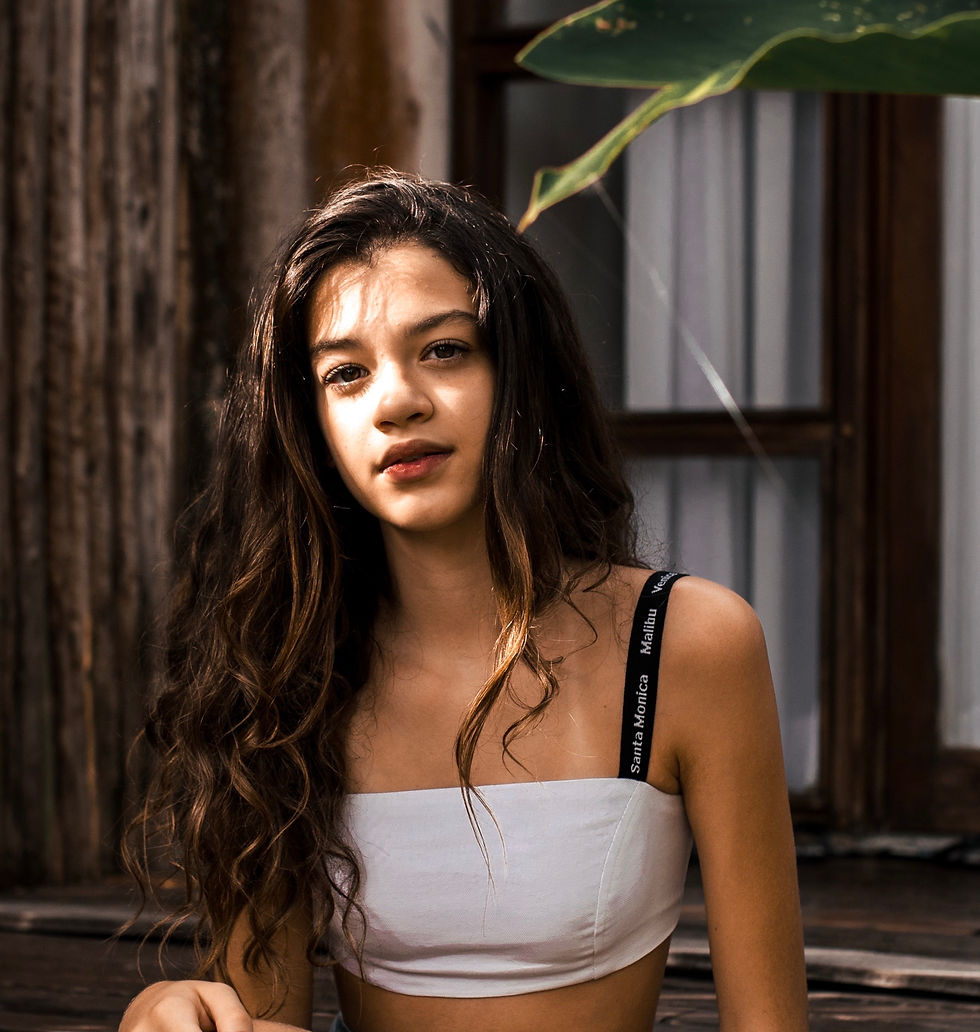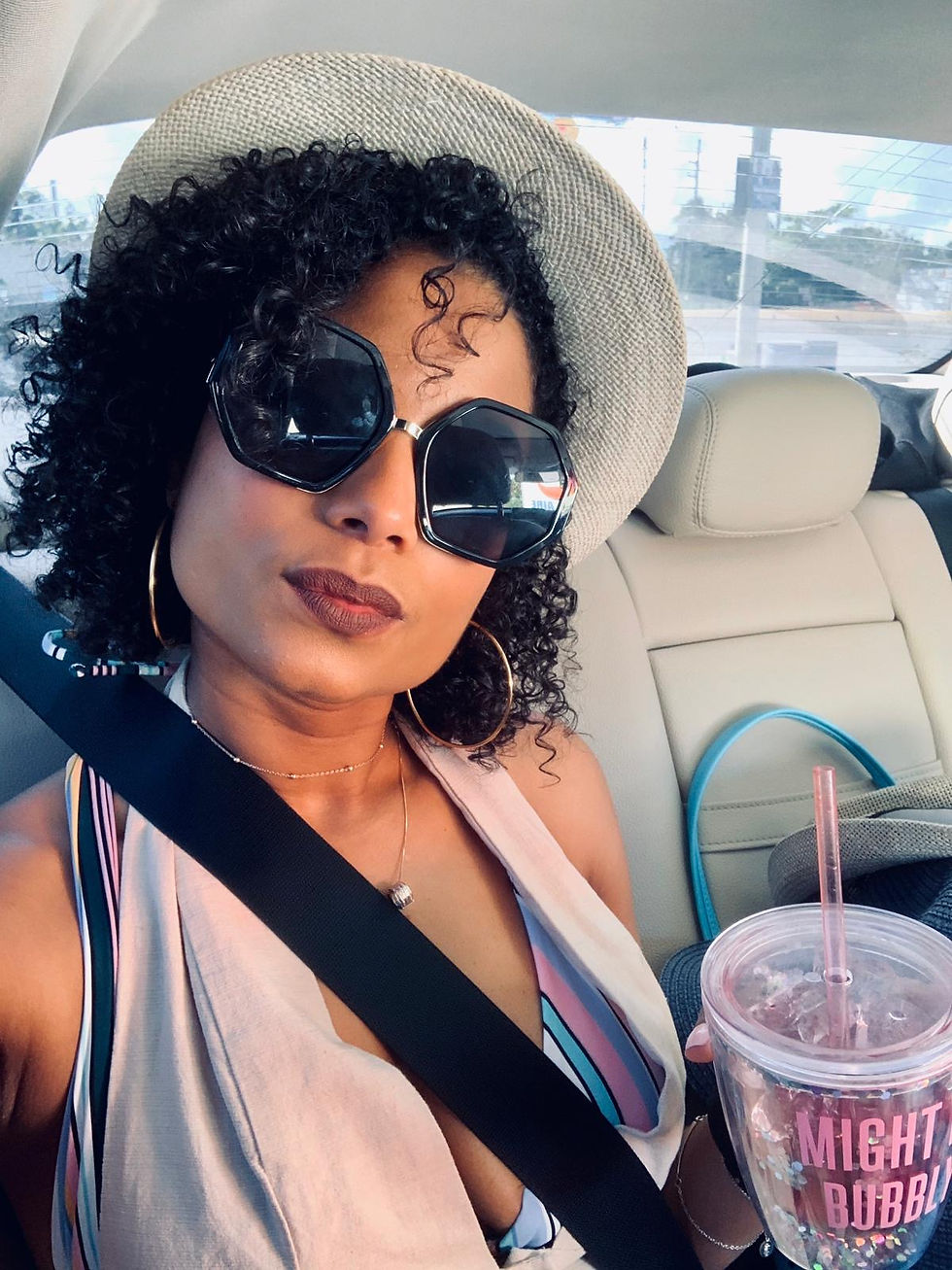What is your hair type, texture and density? why is it important?
- melissadeoleo

- May 23, 2020
- 5 min read
Few years ago there was a very limited selection of products to choose from that were tailored to meet our natural hair’s needs. Products were loaded with ingredients that are now known to damage our curls, it was a one size fits all scenario. This generation began to pay attention and be more aware of what we put in our bodies and this has benefited the natural hair community tremendously.
Today, walking down the hair care isle can be intimidating. There is an entire section dedicated to natural hair care with a variety of products ranging from creams, masks, smoothies, oils, leave in conditioners and milks. You buy a few products and the results are not what you expected, it feels as if you are just wasting your time and money and this happens every time you try to give your natural hair a chance.
They say ignorance is bliss but this is not the case when it comes to your hair. Lack of information is the only thing standing between you and a gorgeous natural crown. Establishing a hair care routine that works for you is the ultimate goal. Knowing your hair type, texture, density and porosity (check previous blog for Hair porosity) will serve as a guide for picking the correct products and proper product application.
A hair follicle is the part of the skin that grows a hair. Attached to the top of it there is the Sebaceous gland that’s in charge of producing an oily, waxy secretion that lubricates the hair called “Sebum”. The hair follicle shape determines the curl patter (hair type) and the hair follicle size determines the thickness of your hair (hair texture).
HAIR TEXTURE
Hair texture refers to the size of each individual hair strand. The circumference of the hair follicle will determine the thickness of your hair. Your hair can have a fine, medium or coarse texture.
To find out which category your hair falls into take a clean hair strand and lay it down flat preferably on a white surface. Cut a piece of sewing thread and place it next to the hair strand. If your hair is thinner than the thread your hair is fine, if it looks similar to the thread is medium, and if it seems thicker than the thread your hair is coarse.
FINE hair has the smallest circumference. This texture is also the most delicate one because the hair strand is very thin. People with fine hair can’t hold curls very well, it lacks volume and body and it tends to be very oily.
MEDIUM hair is the most common type of hair. This texture is easy to style and holds shape longer and it is not as delicate as fine hair.
COARSE hair has the thickest circumference of all textures. It has the largest and more open cuticle making the hair more porous. This texture can resist heat and breakage well, and it’s harder to chemically process.

HAIR DENSITY
Hair density is often confused with hair texture. Your hair density is associated with the number of hair strands growing out of your scalp. The average person has approximately 2,200 strands of hair per square inch on their scalp. The best way to determine your hair density is by looking at your ponytail. If measured, the circumference of your ponytail is less than two inches, then you have low density hair, if its more than four inches then you have high density hair. Anything in between will be considered medium density. You can also put your hair down and look in the mirror, if you are able to see your scalp while not moving or by lightly moving your head then you have low density. If your scalp is not visible at all you have medium-high density

HAIR TYPE
The hair follicle shape will determine your hair type. Based on the famous hairstylist Andre Walker’s typing system there are four different types of hair: straight, wavy, curly and kinky. These are divided into 3 different subcategories A, B and C. A being a wide pattern, B has a medium curl pattern, and C has a tight, small pattern.

TYPE 1
STRAIGHT
Straight hair is the strongest hair of all types. It tends to be shiny because the natural oil produced by the hair (sebum) does not encounter obstruction, it travel straight down the hair strand. This hair type is almost impossible to curl.

TYPE 2
WAVY
Wavy hair tends to be frizzy and is characterized by S shape curls down its length or it can also look straight with slight bend towards the ends. This hair type stands in between straight and curly hair.
2A. Lacks volume at the root and has loose loops or waves towards the ends. It can easily be straightened and it has a fine texture.

2B. Defined S shape pattern that usually begins from the mid length to the ends. Tends to be flat at the crown and is frizzier than type 2A. It is more resistant to styling than 2A and has a medium texture.

2C. the waves are thick and more prone to frizz. The S shape is well defined and starts at the root. It has a coarse texture and is difficult to style.

TYPE 3
CURLY
Curly hair ranges from loose loops to tight corkscrews. This curl patter often resembles a lower case s, upper case S and sometimes even a lower case z or upper case Z. It is climate dependent, gets frizzy in humid conditions. It is prone to damage and if not properly taken care of can look dull and lose definition.
3A. Loose spirals that present an S pattern. This hair type is usually full bodied and frizzy.

3B. has a definite S pattern and curls have a smaller circumference than type 3A. Curls can range from spiral to corkscrew. Tends to be dry and frizzy.

3C. This hair type was added to the chart when it was clear that there was something missing between 3B and 4a, it is considered very curly hair and it’s characterized for very high volume tight coils and being voluminous. It has the smallest circumference of all three types. From this hair type on the hair tends to be really dry because the ringlets blocks the passage of the natural oil your hair produces.

TYPE 4
KINKY
Contrary to believe kinky hair is the most delicate of all hair types and also the driest. It has small tight coiled or zigzag pattern and it is very high density. Its fragile texture is due to fewer cuticle layers protecting the strand.
4A. usually wiry and fragile, tightly coiled S pattern shape with the circumference of a crochet needle.

4B. it doesn’t really coil or curl but has more of a Z pattern, it has more shrinkage than type 4A. Strands range from wiry and coarse to fine and thin.

4C. it is also called coily hair. It might look robust, but it is the most fragile type of hair. Breaks easily, lacks definition and tangles a lot. A lot of moisture and heavier styling products are required to keep this hair type healthy.

While it is completely normal to have more than one hair type on your own head this typing system serves as a blueprint to create a routine works for you. While identifying your hair type gets you one step closer to understanding your hair's needs, it is extremely important to know your hair porosity.
Despite of your hair type keeping your hair moisturized is key to prevent frizzy and dry hair. Deep conditioner, sulfate and silicon free products, microfiber towel, satin scarf or pillowcase are things that we should all be using.
Wavy and curly hair benefit from lightweight natural oils, leaving conditioners and products that help control frizz, while kinky/coily hair benefits from heavier natural oils, butters, creams. Once you figure out your hair type, texture, density and porosity you will be armed with the knowledge you need to buy the right products.
NOTE: IN THIS ARTICLE I MOSTLY USED PICTURES OF MY FRIENDS AND FAMILY TO PORTRAIT EACH HAIR TYPE. THANK YOU GIRLS FOR THE SUPPORT AND BEING PART OF MY JOURNEY!!!




Comments